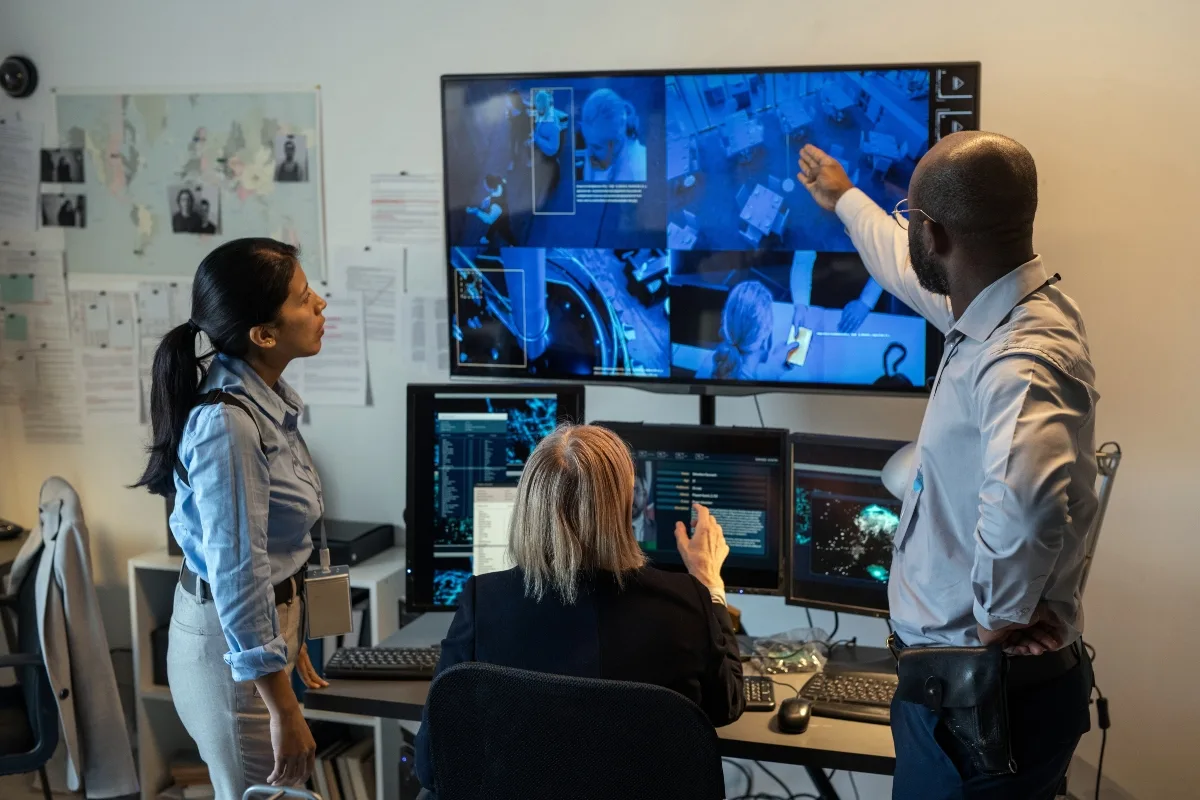In the courtroom, a single image can be the deciding factor between conviction and acquittal, truth and deception, or justice and wrongful prosecution.
But raw images alone aren’t always enough—what matters is how they are analyzed, verified, and presented as evidence.
This is where the benefits of forensic image analysis become invaluable.
By enhancing, authenticating, and scrutinizing visual evidence, forensic experts can uncover critical details that might otherwise go unnoticed, ultimately shaping the outcome of a case.

The Power of Visual Evidence in Legal Proceedings
Images and videos are some of the most compelling forms of evidence. Surveillance footage, dashcam recordings, security photos, and even smartphone videos can provide direct insight into criminal activities, accidents, or disputed events – and are invaluable in conducting accurate video forensics.
But while visuals can be powerful, they are also vulnerable to manipulation, distortion, or misinterpretation.
This is why forensic image analysis is crucial. A trained expert can:
🔹Enhance image quality to clarify details: Adjusting contrast, sharpening edges, or removing noise can reveal hidden features that standard viewing tools miss.
🔹Authenticate images to detect tampering: With digital forensics techniques, experts can determine if an image has been altered, edited, or manipulated.
🔹Extract metadata for contextual evidence: Time stamps, GPS coordinates, and camera model information can be retrieved to verify the origin of an image.
🔹Compare facial and object details: Advanced software can assist in identifying individuals, objects, or key details that may influence a legal argument.
Without proper forensic analysis, an image can be misleading, incomplete, or even inadmissible in court.
When Image Authenticity Becomes a Legal Battleground
One of the most contentious aspects of forensic image analysis is authentication. In today’s digital age, altered images and deepfake videos are becoming more sophisticated.
The ability to distinguish between genuine and manipulated content is now a critical skill in forensic investigations.
Consider a case where a defendant’s alibi relies on a timestamped security photo. If the district attorney suspects image tampering, they may challenge its authenticity.
Here, forensic analysts can assess inconsistencies in pixel structures, lighting conditions, or digital fingerprints left by editing software. If manipulation is detected, the image could be dismissed as unreliable evidence, something both private investigators and legal teams need to be prepared for.
On the flip side, forensic analysis can also protect the credibility of genuine images. Suppose a blurry surveillance video captures a crime, but the details are unclear.
Image enhancement techniques can clarify facial features or license plate numbers, strengthening the prosecution’s case – or helping a criminal defense team support their client’s version of events. Without this level of analysis, crucial evidence could be rendered useless.
The Role of Forensic Image Analysis in Criminal and Civil Cases
The benefits of forensic image analysis extend beyond criminal trials. Civil litigation, accident investigations, and corporate disputes also rely on image forensics to establish facts.
🔹Personal Injury and Accident Claims: Forensic image analysis can reconstruct accident scenes using photos or video footage. By enhancing visuals, experts can determine factors like vehicle speed, traffic signals, and environmental conditions at the time of the incident.
🔹Intellectual Property Disputes: In cases of copyright infringement, forensic experts can analyze images to trace alterations, confirm original ownership, and detect unauthorized modifications.
🔹Corporate Fraud Investigations: Companies facing allegations of falsified documents or altered security footage often turn to forensic analysts to verify authenticity and uncover potential tampering.
🔹Family Law and Custody Battles: In cases involving disputed photographic evidence, forensic analysis can validate the integrity of an image, preventing misleading claims from influencing custody or legal decisions.
Common Techniques Used in Forensic Image Analysis
Forensic experts use a variety of advanced tools and methodologies to analyze images, videos, and audio. Some of the most common techniques include:
🔹Error Level Analysis (ELA): Detects inconsistencies in compression levels to reveal areas of potential digital manipulation.
🔹Reverse Engineering Metadata: Extracts embedded information such as timestamps, geolocation data, and device details to verify authenticity.
🔹Facial Recognition and Object Identification: Uses AI-driven technology to compare and match facial features, identify license plates, or other critical objects.
🔹Super-Resolution Enhancement: Improves low-quality images by reconstructing missing details to provide clearer evidence.
🔹Shadow and Reflection Analysis: Evaluate lighting conditions and reflections to determine whether an image is consistent with the claimed time and location.
Each of these techniques plays a role in ensuring that images and videos presented in court are accurate, reliable, and admissible.
Why Expert Testimony Matters
Even the most sophisticated image analysis is only as valuable as the expert presenting the findings. Courts often rely on expert testimony from forensic specialists to explain their methodology, defend their conclusions, and demonstrate the reliability of their work.
Without expert testimony, even valid forensic findings may be dismissed due to a lack of clarity or credibility.
A skilled forensic analyst must:
🔹Clearly articulate technical findings in a way that judges and juries can understand.
🔹Provide supporting documentation to validate their methods and conclusions.
🔹Remain impartial and adhere to ethical forensic standards.
This is why choosing a reputable forensic lab with experienced professionals is critical when dealing with image evidence in a legal case.
Strengthen Your Case with Professional Forensic Analysis
When visual evidence is at the heart of a legal dispute, the difference between a strong case and a weak one often comes down to expert analysis.
The benefits of forensic image analysis include enhanced image clarity, authentication of evidence, and uncovering digital tampering—factors that can significantly impact legal proceedings.
If you need reliable forensic image analysis for your case, Stutchman Forensic Lab LLC provides expert services to ensure that your evidence is credible, accurate, and admissible in court.
In legal battles where every detail matters, having the right forensic support can be the deciding factor in achieving justice.
Contact us today for expert analysis you can trust and give your case the clarity and credibility it deserves.
